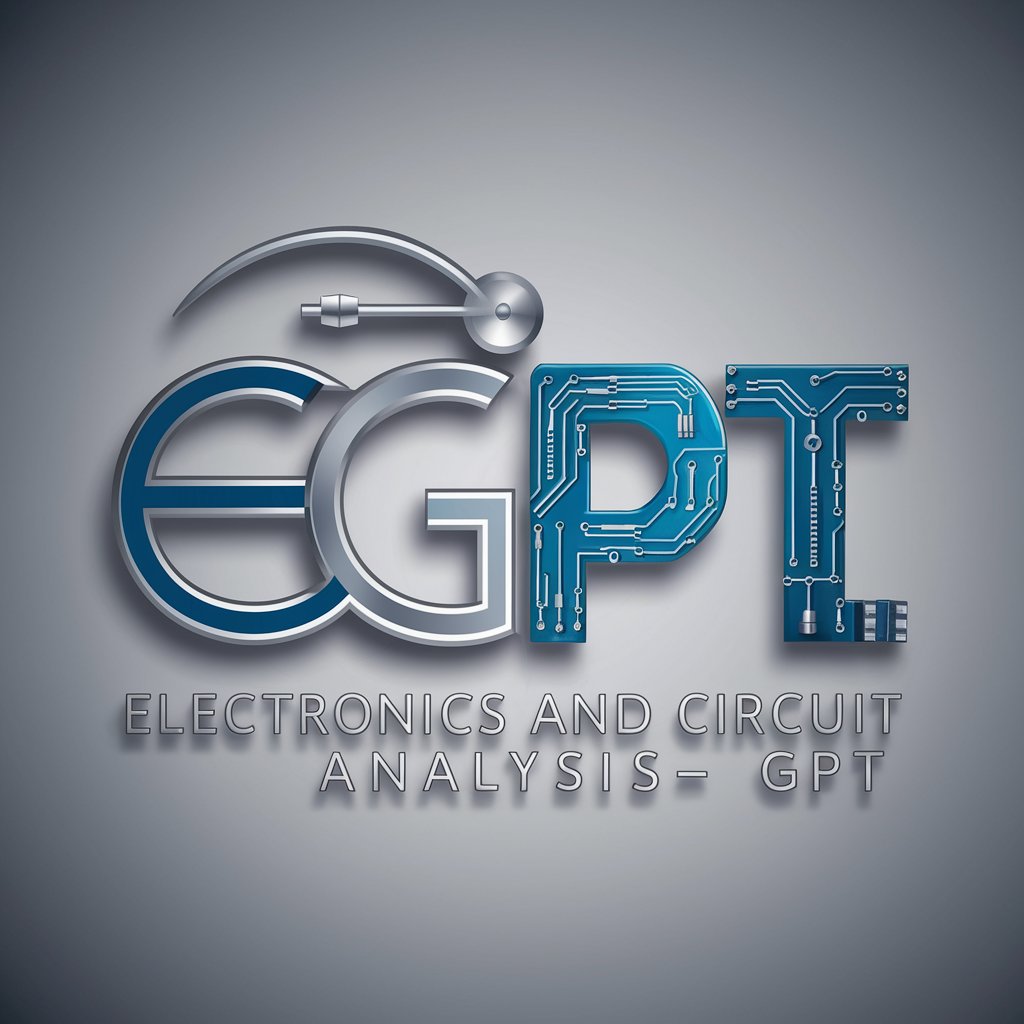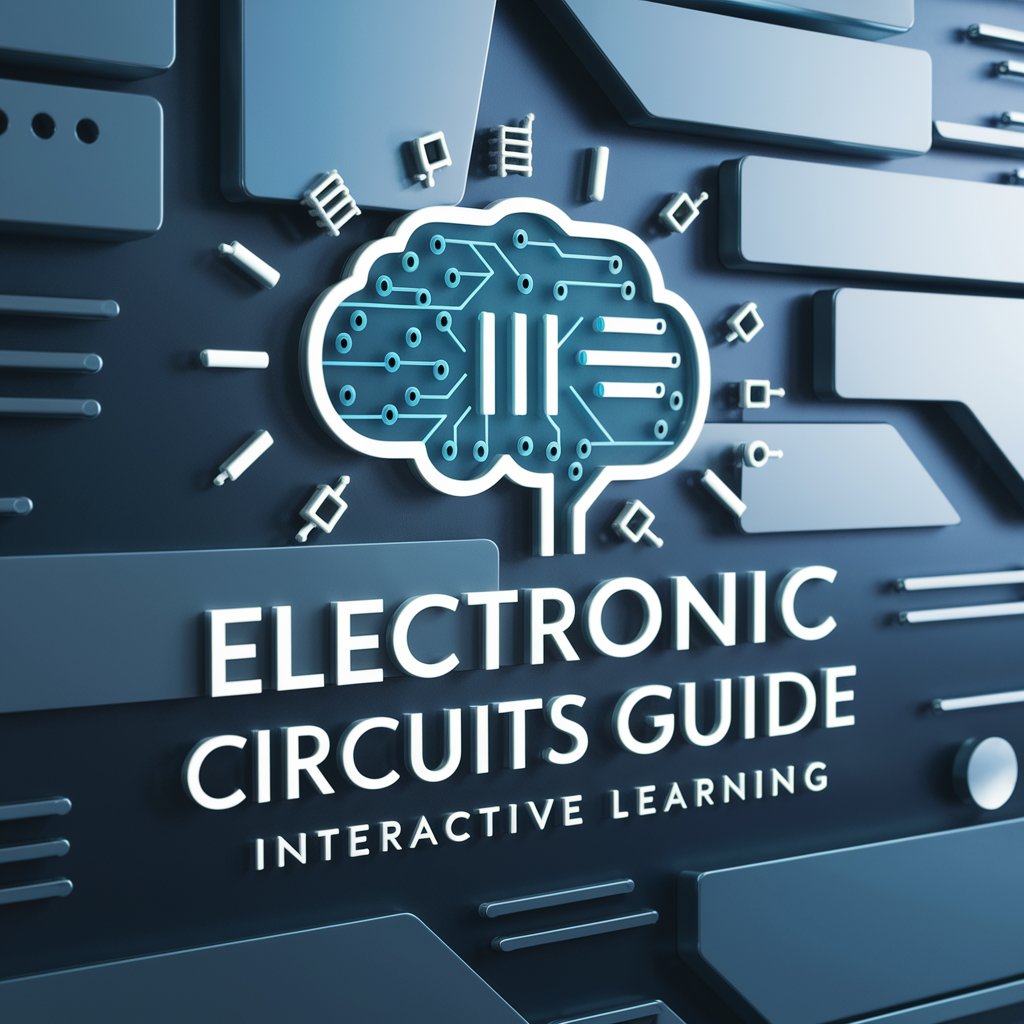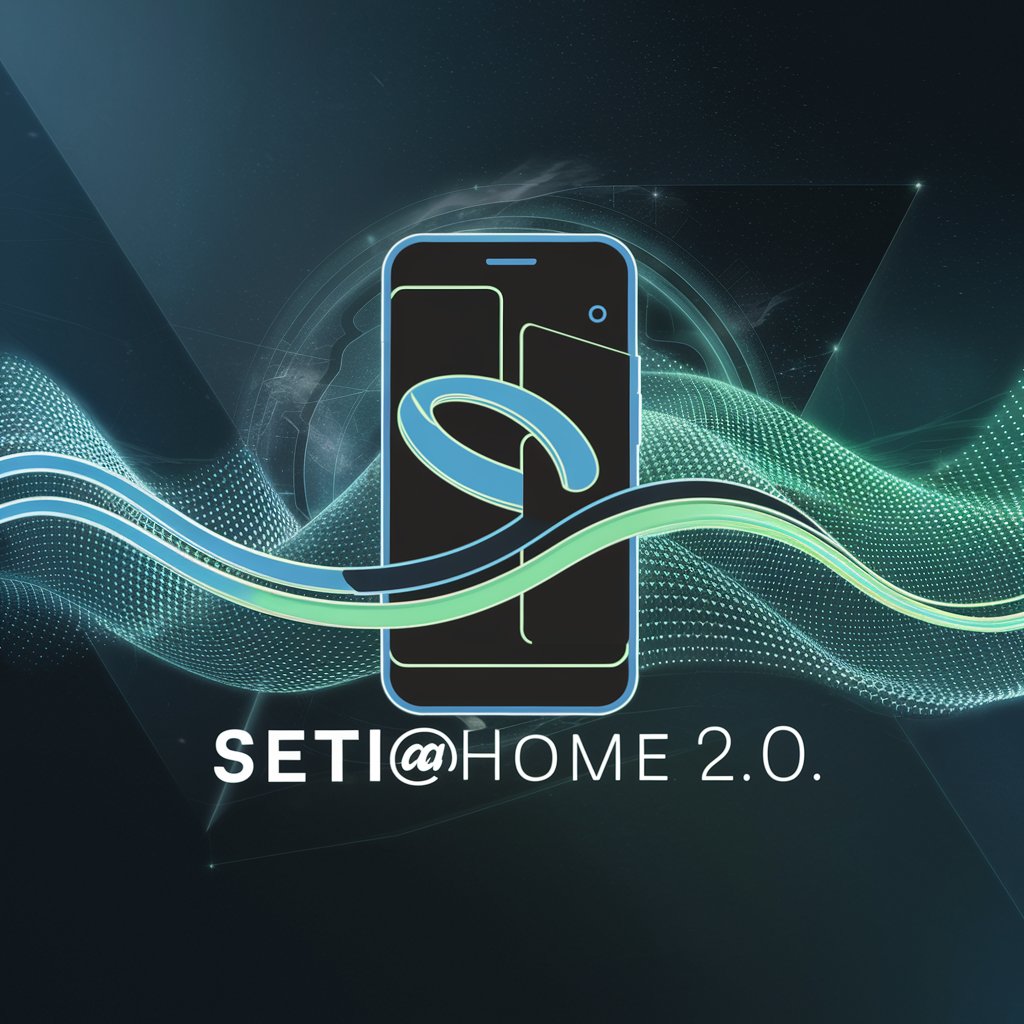Electronics and Circuit Analysis - Circuit Analysis Tool

Hello! How can I assist with your electronics and circuit analysis today?
AI-powered Circuit Solver and Analyzer
Explain how Kirchhoff's laws are applied in circuit analysis.
What are the differences between NPN and PNP transistors?
Describe the process of nodal analysis in electrical circuits.
How can one determine the maximum power transfer in a circuit?
Get Embed Code
Introduction to Electronics and Circuit Analysis
Electronics and Circuit Analysis encompasses the study and application of understanding the behavior and interaction of electronic components within a circuit. These components include resistors, capacitors, inductors, diodes, and transistors, among others. The primary purpose of circuit analysis is to predict the voltages at different points and the currents through various components of an electronic circuit. For example, using Ohm's Law (V = IR) to determine the voltage drop across a resistor, or Kirchhoff's laws to analyze the currents in a complex circuit network. Such analysis is foundational in designing, troubleshooting, and optimizing electronic devices and systems, ranging from simple circuits like a flashlight to complex systems like computers and telecommunications networks. Powered by ChatGPT-4o。

Main Functions of Electronics and Circuit Analysis
Design and Simulation
Example
Creating a new smartphone circuit design
Scenario
Engineers use circuit analysis to design the power supply circuitry for a smartphone, ensuring it efficiently manages battery power to extend life and optimize performance.
Troubleshooting and Repair
Example
Identifying a faulty component in a television
Scenario
Technicians apply circuit analysis to pinpoint a failed capacitor in the power supply of a television, enabling accurate repair.
Optimization and Enhancement
Example
Improving the audio quality of a speaker system
Scenario
Audio engineers use circuit analysis to modify the crossover network in a speaker system, enhancing its audio quality and performance.
Educational Tool
Example
Teaching students about electrical principles
Scenario
Educators use basic and advanced circuit analysis in their curriculum to teach students about electrical principles and electronic design, providing a hands-on learning experience.
Ideal Users of Electronics and Circuit Analysis Services
Electrical and Electronics Engineers
Professionals involved in the design, development, and testing of electronic equipment and systems. They benefit from circuit analysis by being able to create more efficient and innovative products.
Technicians and Hobbyists
Individuals who build, maintain, or repair electronic devices. Circuit analysis aids in understanding how devices work and how to troubleshoot them effectively.
Students and Educators
Students learning about electronics and their instructors. Circuit analysis is a fundamental tool for understanding electrical engineering principles and for practical, hands-on learning.
Research Scientists
Researchers working on cutting-edge electronic technologies, such as quantum computing or flexible electronics. Circuit analysis is crucial for exploring new theories and applications.

How to Use Electronics and Circuit Analysis
Step 1
For a hands-on trial without any commitments, navigate to yeschat.ai. This platform offers a free experience without the necessity of creating an account or subscribing to ChatGPT Plus.
Step 2
Identify the specific electronic concept or circuit problem you need help with. This could range from understanding basic components like resistors and capacitors to analyzing complex circuits using Kirchhoff's laws.
Step 3
Prepare any relevant diagrams or equations related to your query. Having clear, detailed information at hand will greatly improve the accuracy and relevance of the assistance you receive.
Step 4
Utilize the provided tools and resources. For complex analyses, such as mesh or nodal analysis, make sure to break down the steps and apply the tool's capabilities to each segment for a thorough understanding.
Step 5
Review and apply the guidance provided. Practice with similar problems to deepen your understanding and reinforce learning. For best results, engage actively by asking follow-up questions or seeking clarification on complex topics.
Try other advanced and practical GPTs
Electric and Electronic Circuits Tutor
AI-powered circuit learning assistant

Electronic Music Producer
AI-powered electronic music production guidance.

Electronic Circuits Guide: Interactive Learning
Master circuits with AI-powered guidance.

Electronic Explorer
Empowering Electronics Learning with AI

Electronic Girlfriend
Experience companionship redefined by AI.

Electronic Guru
Empowering electronics projects with AI

Vando Agency
Revolutionizing Digital Experience with AI

Profit Participation Note (PPN) Investment Analyst
Empower Your PPN Investments with AI

SETI@Home 2.0
Empowering the search for extraterrestrial intelligence with AI.

Hackathon Expert
Your AI-powered hackathon mentor

eFoil Racing Official
Elevate your race, powered by AI.

Bedroom Bliss Advisor
Harmonize Your Space with AI

Detailed Q&A on Electronics and Circuit Analysis
What basic principles does Electronics and Circuit Analysis cover?
Electronics and Circuit Analysis encompasses fundamental laws such as Ohm’s Law and Kirchhoff’s Laws, along with principles governing the behavior of basic electronic components like resistors, capacitors, and inductors. It also includes analysis techniques for both DC and AC circuits, and the study of semiconductor devices like diodes and transistors.
How can I analyze a circuit with multiple power sources?
For circuits with multiple power sources, you can use techniques like superposition, Thevenin's theorem, or Norton's theorem. These methods involve simplifying the circuit into manageable parts, analyzing each part separately, and then combining the results to understand the overall circuit behavior.
Can Electronics and Circuit Analysis help in designing a circuit?
Yes, it provides the theoretical foundation and analytical tools necessary for designing circuits. By understanding how different components interact and how to apply analysis techniques, you can create efficient, functional circuits for various applications, from simple LED drivers to complex digital electronics.
What is the importance of frequency analysis in circuits?
Frequency analysis is crucial for understanding how circuits respond to different frequencies, particularly in AC circuits and signal processing. It helps in designing filters, amplifiers, and other circuits where frequency behavior significantly impacts performance and functionality.
How do semiconductor devices fit into circuit analysis?
Semiconductor devices like diodes, BJTs, and MOSFETs are essential for modern electronics, allowing for rectification, amplification, and switching. Circuit analysis tools enable the prediction and optimization of these devices' behavior in circuits, critical for both digital and analog electronics design.
